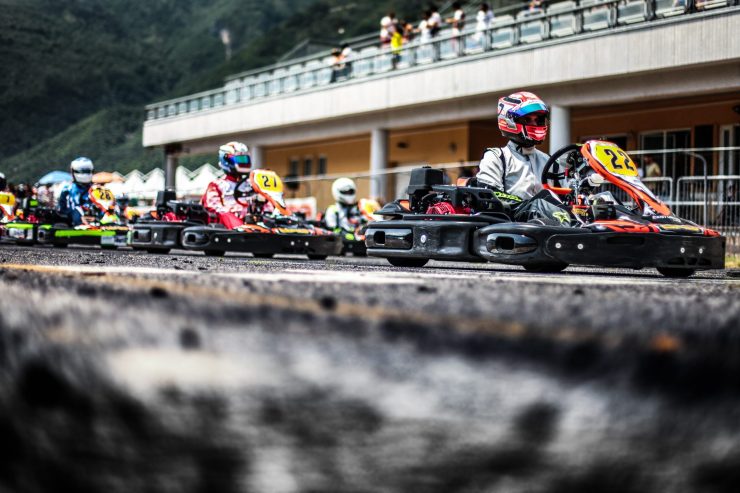CRG is one of the most active players on the Rental Kart market, not only from a commercial point of view with its complete range of chassis, but also in terms of competitive events and formats. In the last few years Rental kart races have attracted a very high number of enthusiasts to the racetrack, many of whom have become real experts in driving these specific vehicles equipped with 4-stroke and electric engines. Endurance races are currently the most popular ones with this type of kart, but sprint and “time attack” events are also increasingly popular in the many Rental tracks around the world.
The community of drivers who love to compete with CRG Rental karts is really wide and its highlight of the season is represented by the 24 Hours Karting of Italy (more information by clicking here). We have asked the most experienced drivers of these events to provide us with some indications to the high number of enthusiasts who wish to improve their performance driving a Rental Kart and we have drawn up a summary with some simple tips.
First of all, everyone agrees that driving a go-kart is very different from driving an everyday car, as much as fast and powerful it might be. Behind the wheel of a kart you need a specific “drive” and it is easy to run into some very common mistakes, which can compromise performance. Learning a few tricks will be essential to improve and become more competitive on the track.
The first tip is about the cornering speed. There is a widespread belief that entering corners at maximum speed stands for the driver’s ability and consequent lap performance. This is perhaps the number one mistake, as it is necessary to enter the corner at the maximum speed allowed by the kart and the radius of the corner itself (and not at the absolute speed), without running into skids that would waste time. Oversteer in the middle of the corner means that you have entered it in a too hard way and you are wasting time, as you will have to accelerate later and you will be slower, not only in the corner you are taking, but also on the next straight. Rental Karts use hard tires with little grip, so it is easy to loose grip, which must be managed without exaggerating. The timekeeper will reward this sensitivity.
The second piece of advice that experienced drivers agree on is to be gentle with the steering, as the steering-wheel of a go-kart is different from the one an everyday car and is much more sensitive. They do recommend the classic 9 – 3 o’clock hand position and the grip must be firm, in order to control the kart more precisely, but also to be ready to react quickly to possible skids.
A determined role on the driving feeling also passes through the correct use of the brakes. Those of a go-kart only act on the rear wheels and braking as you are used to on the everyday car is not effective. The best way to brake on a kart is to firmly step down on the brake pedal at the beginning (braking point), almost coming to the wheel-lock, and then gently release the brake as you get closer to the apex.
Once you have found the feeling with cornering speed, hands on the steering wheel and brake management, you can concentrate on the trajectories and the very important apex when cornering. But this theme deserves a specific study. In the meantime, the next time you get on the track, try to implement these simple tips and you will see your best lap improving every time you cross the finish line.

